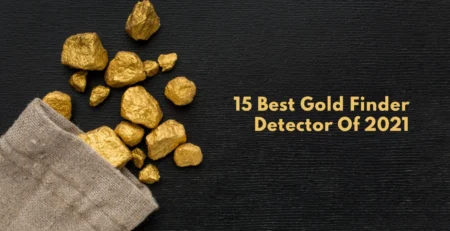
8
Feb
INTRODUCTION TO METAL DETECTING
If you decide to start metal-detecting, there are some helpful tips to know. First, be sure you choose a place where you can legally metal-detect. Most public parks, beaches, and wooded areas are friendly for metal detectors. Next, choose a high-quality detector and be sure to read its manual thoroughly so you know how to use it properly. You may want to practice in your backyard a few times until you get the feel for it.
A metal detector is a detector that can detect various grades and types of metals. Typically, it will notify the user that metal has been found via a series of beeping noises. Metal detectors can be used in airports, by the military or police, by construction workers, or by everyday people who enjoy looking for metal as a hobby. The 1950s and 1960s saw metal-detecting becoming much more popular as a hobby, and smaller devices were developed that people could carry with them.
While the art of metal-detecting can take some patience and skill, it is a great way to get exercise and maybe find a special hidden treasure. Before you venture out on a metal-detecting excursion, learn more about how to find items and what role the metal detector serves.
prospecting-for-gold
Gold Prospecting: Gold may be found anywhere below the surface of the globe, whether under the land or under the ocean floor. Gold prospecting is in nature to search for gold deposits that are found in different types of rocks and geological formations so that gold mines are dug to extract it from the ground. It is found in large quantities in South Africa, but the politics and laws differ in countries, which affects the process of gold mining and mining. Gold mining maybe by searching for it in ancient underground tombs or temples, where the inhabitants of various ancient civilizations bury the gold of the dead with him in his grave, as in The ancient Egyptian civilization for their belief in life after death, or burying gold in temples, or burying the gold of Egyptian kings with them in their huge tombs, as is the case in the pyramids of Egypt. And as the ancients used to bury it in certain places to return to it later, as it was in cases of war, and in some countries, the process of excavating buried gold is prohibited, so the law of the country must be confirmed. D before you start prospecting for gold
Methods of detecting gold without a device
Usually, the search for gold is done using gold detectors. As for gold detection methods without a gold detector or metal detector, it is also possible, and these methods can be used to search for and find gold under the surface of the earth, and sometimes it is better than using the device because the device is subject to interference with the condition of The presence of other metals, and among the ways to detect gold without a device is the following: In the case of buried gold, it is possible to search in the places of life of ancient civilizations and follow the signs and sometimes maps that indicate the place of burial of gold with great accuracy. Searching for some types of rocks with which gold is usually found in nature, such as quartz rocks. Searching in places where there is a high percentage of sulfur rocks, such as volcanoes
Browse metal detectors that detect gold, silver, and relics and aid underwater search and recovery
How Do Metal Detectors Work?
Metal detectors work by transmitting an electromagnetic field from the search coil into the ground. Any metal objects (targets) within the electromagnetic field will become energized and retransmit an electromagnetic field of their own. The detector’s search coil receives the retransmitted field and alerts the user by producing a target response. our detectors are capable of discriminating between different target types and can be set to ignore unwanted targets.
The operation of metal detectors is based upon the principles of electromagnetic induction. Metal detectors contain one or more inductor coils that are used to interact with metallic elements on the ground. The single-coil detector illustrated below is a simplified version of one used in a real metal detector.
A pulsing current is applied to the coil, which then induces a magnetic field shown in blue. When the magnetic field of the coil moves across metal, such as the coin in this illustration, the field induces electric currents (called eddy currents) in the coin. The eddy currents induce their own magnetic field, shown in red, which generates an opposite current in the coil, which induces a signal indicating the presence of metal.
Uses of gold detectors
- Detection of natural raw gold, including very small gold nuggets.
- Detection of gold veins that are found in desert soils within the rocks.
- The discovery of ancient minted gold coins from the remnants of previous civilizations such as the Persians, Romans, and Pharaohs.
- Uncovering the ornaments that have been used since ancient times in the adornment of kings and women, such as crowns, bracelets, and rings.
- Excavation for ancient monuments made of gold or other metals, for example, gold or gold-encrusted swords.






